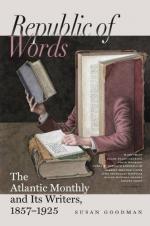The lower orders, such as the humming-bird with his insect-like stomach and sucking-tube, and so on up through the warblers and flycatchers, more strictly bound by the necessities of their life, closely follow the sun,—while the upper-ten-thousand, the robins, cedar-birds, sparrows, etc., like man, omnivorous in their diet and their attendant chevaliers d’industrie, the rapacious birds, allow themselves greater latitude, and go and come occasionally at all seasons, though in general tending to the south in winter and north in summer. But precedence before all is due to permanent residents, with whom our intercourse is not of this transitory and fair-weather sort. Such are the crow, the blue jay, the chickadee, the partridge, and the quail, who may be called regular inhabitants, though perhaps all of them wander occasionally from one district to another. Besides these, perhaps some of the hawks and owls remain here throughout the year. But the species I have named are the only ones that occur to me as equally numerous at all seasons in the immediate vicinity of Boston, and never out of town, whether you take the census in May or in January.
In spite of our uninterrupted acquaintance with them, however, there are still many of the nearest questions concerning these birds for which I find no sufficient answers. Even to the first question—How do they get their living?—there are only vague replies in the books.
There is the crow, for example. I have seen crows in the neighborhood of Boston every week of the year, and in not very different numbers. My friend the ornithologist said to me last winter, “You will see that they will be off as soon as the ground is well covered with snow.” But on the contrary, when the snow came, and after it had lain deep on the fields for many days, I saw more than before,—probably because they found it easier to get food in the neighborhood of the houses and cultivated grounds.
A crow must require certainly half a pound of animal food, or its equivalent, daily, in order to keep from starving. Yet they not only do not starve that I hear of, but seem to keep in as good case in winter as in summer, though what they find to eat is not immediately apparent. The vague traditional suggestion of “carrion,” as of dead horses and the like, does not help us much. Some scraps doubtless may be left lying about, but any reliable stores of this kind are hardly to be looked for in this neighborhood. A few scattered kernels of corn, perhaps on a pinch a few berries, he may pick up; though I suspect the crow is somewhat human in his tastes, and, besides animal food, affects only the cereals. The frogs are deep in the mud. Now and then a squirrel or a mouse may be had; but they are mostly dozing in their holes. As for larger game, rabbits and the like, the crow is hardly nimble enough for them, nor are his claws well adapted for seizing; anything of this kind he will scarcely get, except as the leavings




